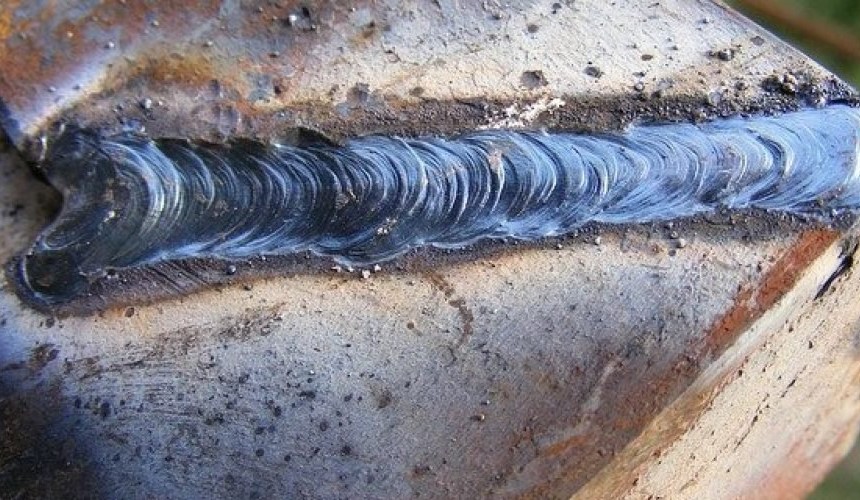Reliable Ways to Prevent Weld Undercut in Your Welding Projects
Reliable Ways to Prevent Weld Undercut in Your Welding Projects
Blog Article
Understanding the Art of Welding: Exactly How to Avoid Undercut Welding Issues for Flawless Manufacture Results
Effectiveness and accuracy are paramount on the planet of welding, where even the tiniest flaw can endanger the architectural honesty of a fabricated item. One usual challenge that welders face is undercutting, a problem that can compromise a weld joint and lead to pricey rework. By comprehending the source of undercut welding and executing efficient techniques to stop it, welders can boost their craft to brand-new levels of excellence (Preventing weld undercut). In the quest of flawless fabrication outcomes, grasping the art of welding to avoid undercut problems is not just an ability but a need for those making every effort for excellence in their work.
Understanding Undercut Welding

To stop undercut welding, welders should guarantee proper welding specifications, such as changing the existing, voltage, travel speed, and keeping the correct electrode angle. Furthermore, using the suitable welding method for the certain joint setup is necessary. Employing weaving movements or backstepping methods can aid make certain appropriate weld steel deposition and minimize the probability of undercut development. Routine assessment of welds during and after the welding process is likewise essential to capture any undercut very early and make necessary changes to avoid more problems. Preventing weld undercut. By recognizing the reasons for undercut welding and applying precautionary steps, welders can achieve top quality, structurally sound welds.
Sources Of Undercut in Welding
Understanding the aspects that add to undercut in welding is vital for welders to create top quality, structurally audio welds. When the weld steel does not correctly load the groove formed in between the base steel and the formerly deposited weld steel, undercutting takes place. A number of elements can cause undercut in welding. One common reason is excessive warmth input. Welding at high temperature levels for extended durations can result in the base steel thawing more than preferred, bring about undercut. Inadequate welding inaccurate or present welding speed can likewise add to damage. Not enough current may not provide enough warmth to thaw the base and filler metals properly, while extreme rate can protect against correct fusion, triggering undercut. Additionally, incorrect electrode angles or inaccurate torch adjustment strategies can produce areas of low weld metal deposition, advertising undercut. Recognizing these causes and applying appropriate welding techniques can assist prevent undercutting problems, ensuring long lasting and strong welds.
Methods to avoid Undercutting

To minimize the danger of damaging in welding, welders can utilize tactical welding techniques aimed at enhancing the high quality and stability of the weld joints. Additionally, utilizing the proper welding strategy for the particular joint configuration, such as weave or stringer beads, can contribute to reducing damaging.
Additionally, appropriate joint preparation, consisting of making sure tidy base materials devoid of impurities and utilizing the appropriate welding consumables, is important in avoiding undercut problems. Employing back-step welding techniques and managing the weld bead account can likewise aid disperse heat equally and reduce the threat of undercut. Regular assessment of the weld joint during and after welding, as well as executing top quality guarantee procedures, can assist in attending to and spotting damaging concerns immediately. By implementing these techniques diligently, welders can attain perfect fabrication results with marginal undercut defects.
Relevance of Correct Welding Parameters
Picking and preserving ideal welding criteria Go Here is important for accomplishing successful welds with minimal defects. Welding criteria refer to variables such as voltage, present, travel rate, electrode angle, and shielding gas circulation rate that straight influence the welding procedure. These specifications have to be very carefully changed based upon the kind of product being welded, its density, and the welding technique utilized.
Correct welding specifications ensure this website the correct amount of heat is used to melt the base metals and filler material uniformly. If the parameters are established too expensive, it can lead to too much warmth input, causing spatter, distortion, or burn-through. On the various other hand, if the parameters are also reduced, incomplete blend, absence of infiltration, or damaging may occur.
Quality Control in Welding Procedures

Conclusion
Finally, grasping the art of welding requires a thorough understanding of undercut welding, its causes, and strategies to stop it. By making certain proper welding criteria and applying quality control practices, flawless construction outcomes can be accomplished. It is important for welders to regularly strive for quality in their welding operations to prevent undercut problems and create premium welds.
Undercut welding, an usual problem in welding processes, happens when the weld metal doesn't properly load the groove and leaves a groove or clinical depression along the bonded joint.To protect against undercut welding, welders need to guarantee appropriate welding parameters, such as changing the present, voltage, traveling rate, and maintaining the proper electrode angle. Inadequate welding current or wrong welding rate can likewise moved here contribute to damage.To reduce the risk of undercutting in welding, welders can employ calculated welding strategies intended at enhancing the top quality and integrity of the weld joints.In verdict, mastering the art of welding calls for a detailed understanding of undercut welding, its reasons, and techniques to stop it.
Report this page